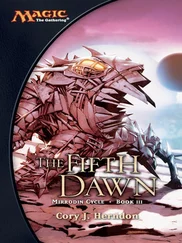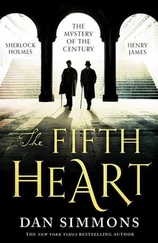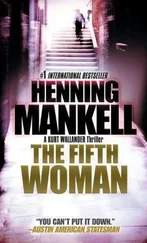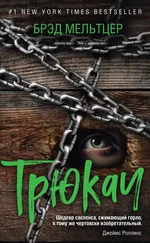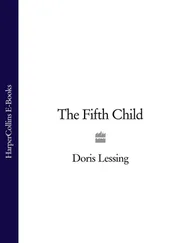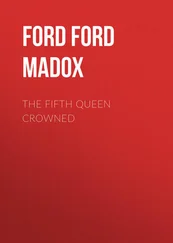Clenching his jaw and keeping his famous gray eyes staring straight ahead, President Orson Wallace walked alone down the main aisle, as if he were in a wedding of one.
He was used to being stared at. That was part of the job. But as he headed farther down the aisle, even the most powerful man in the world wasn’t ready for the sudden breathlessness that overtook him. The reality of the moment pressed against his chest. This was the funeral of his best friend.
It’s one thing to be stared at by strangers. This was a roomful of family and friends, people who used to call the President by his first name.
Growing up in Ohio, Palmiotti and Wallace went from grade school, to high school, to college at the University of Michigan, always together. When Wallace was elected governor, Palmiotti followed. They were together on that night they never talked about anymore. And when Wallace won the White House, someone mentioned that when George H. W. Bush was elected President, he appointed a dear friend as White House doctor, understanding that sometimes the best medicine was simply having someone to talk to. Especially someone who knew you well. And knew your secrets.
The President liked that. On the day of Wallace’s Inauguration, Dr. Stewart Palmiotti was made head of the White House Medical Unit, with an office adjacent to the West Wing.
“All those things you did for him… You know he loved you,” Palmiotti’s girlfriend Lydia whispered as the President finally reached the front row. Her voice… her body… everything was shaking as she stood from her seat and embraced Wallace.
Returning her hug, but staying silent, the President slowly made his way to the far end of the front row, pretending he didn’t see their twelfth-grade history teacher in the crowd.
But the President’s real pain didn’t come from spotting old friends. It came from the certain knowledge that he was responsible for all this.
True, the President didn’t pull the trigger. But it was the President who sent Palmiotti after the archivist: Beecher.
It was Beecher who had learned what the President and Palmiotti had done on the worst night of their lives, back in college, twenty-six years ago. It was Beecher who found out that they had buried a baseball bat and car keys into the face of a man from their hometown. And that Palmiotti and the future President, along with Wallace’s sister, had shattered the man’s eye socket, punctured his face, and driven bits of his skull into his brain, causing irreversible brain damage.
Worst of all, it was Beecher—and the group he worked with—who would never let it go… never stop searching… not until they could actually prove what happened that night years ago.
Beecher and his so-called Culper Ring.
They were the ones who could do the real damage—the ones who knew Wallace and Palmiotti’s secret. Yet that wasn’t the only secret the President was keeping.
Taking his seat at the far end of the aisle, the President of the United States eyed his best friend’s coffin.
Almost on cue, his phone vibrated in his pocket. Looking down, President Wallace pulled it out just enough to read the newest text onscreen:
How’s my funeral going? Dr. Stewart Palmiotti asked.
PART I
The First Assassination
“What will Miss Harris think of my hanging on to you so?” Mary Lincoln asked, holding her husband’s hand.
“She won’t think anything about it,” Abraham Lincoln replied.
They were the last words Lincoln spoke before
John Wilkes Booth put a bullet in his brain.
1
Today
Washington, D.C.
The Knight knew his history. And his destiny. In fact, no one studied those more carefully than the Knight.
Rolling a butterscotch candy around his tongue, he pulled the trigger at exactly 10:11 p.m.
The gun—an antique pistol—let out a puff of blue-gray smoke, sending a spray of meat and blood across the wooden pews of St. John’s Church, the historic building that sat directly across the street from the White House.
“Y-You shot me…” the rector cried, clutching the back of his shoulder—his collarbone felt shattered—as he reeled sideways and stumbled down the main aisle.
The blood wouldn’t stop. But the Knight’s gun hadn’t delivered a killshot. At the last minute, the rector, who’d been in charge of St. John’s for nearly a decade, had moved.
The Knight just stood there, waiting for him to fall. The stark white plaster mask he wore ensured that his victim couldn’t get a good look at his face. But the rector still had his strength.
Sliding his gun back in his pocket, the Knight moved calmly, almost serenely down the aisle, toward the ornate altar.
“Help! Someone… please ! Someone help me! ” the rector, a sixty-year-old man with rosy cheeks, gasped as he ran, looking back at the frozen white mask, like a death mask, that followed him.
There was a reason the Knight had picked a church, especially this church, dubbed “the Church of the Presidents” because every President since James Madison had worshiped here.
It was the same with the homemade tattoo on the web of skin between his own thumb and pointer-finger. The Knight had finished the tattoo last night, using white ink since it was invisible to the naked eye. It took five needles, which he bundled together and dipped in ink, and four hours in total, puncturing his skin over and over, wiping away the blood.
The only break he took was right after he had finished the first part—the initials. Then, from his pocket, he had pulled out a yellowed deck of playing cards, thumbing past the hearts, clubs, and diamonds, stopping on… Spades .
In the dictionary, spades were defined as shovels. But when the four suits of cards were introduced centuries ago, each one had its own cryptic meaning. The spade wasn’t a tool to dig with. It was the point of a lance.
The weapon of a knight.
“ I need help! Please… anyone! ” the rector screamed, scrambling frantically and making a sharp right through the double doors and down the long hallway that led out of the sanctuary.
The Knight’s pace was perfectly steady as he followed the curved hallway back toward the church offices. His breath puffed evenly against the white plaster mask.
Up ahead, from around the corner, he heard a faint beep-beep-boop of a cell phone. The rector was trying to call 911.
But like his hero, who had done this so long ago, the Knight left nothing to chance. The plastic gray device in his pocket was the size of a cell phone, and could kill any cell signal in a fifty-yard radius. Cell jammers were illegal in the United States. But they cost less than $200 on a UK website.
Around the corner, where the main church offices began, there was a dull thud of a shoulder hitting wood: the rector realizing that the doorknob had been removed from the front door. Then the loud thunderclap of an office door slamming shut. The rector was hiding now, in one of the offices.
In the distance, the faint sound of police sirens was getting louder. No way was the rector able to call 911, but even if he was, the maze had nothing but dead ends left.
Looking right, then left, the Knight checked the antique parlor rooms that the church now used for AA meetings and for the “Date Night” services they held for local singles. This side of the building, known as the Parish House, was nearly as old as the church itself, but not nearly as well kept up. Throughout the main floor, every one of the tall cherry office doors was open. Except one.
With a sharp twist of the oval brass doorknob, the Knight shoved the large door open. The sirens were definitely getting louder. In the far left corner, by the bookcase, the rector was crying, still trying to pry open the room’s only window, which the Knight had nailed shut hours earlier.
Читать дальше

